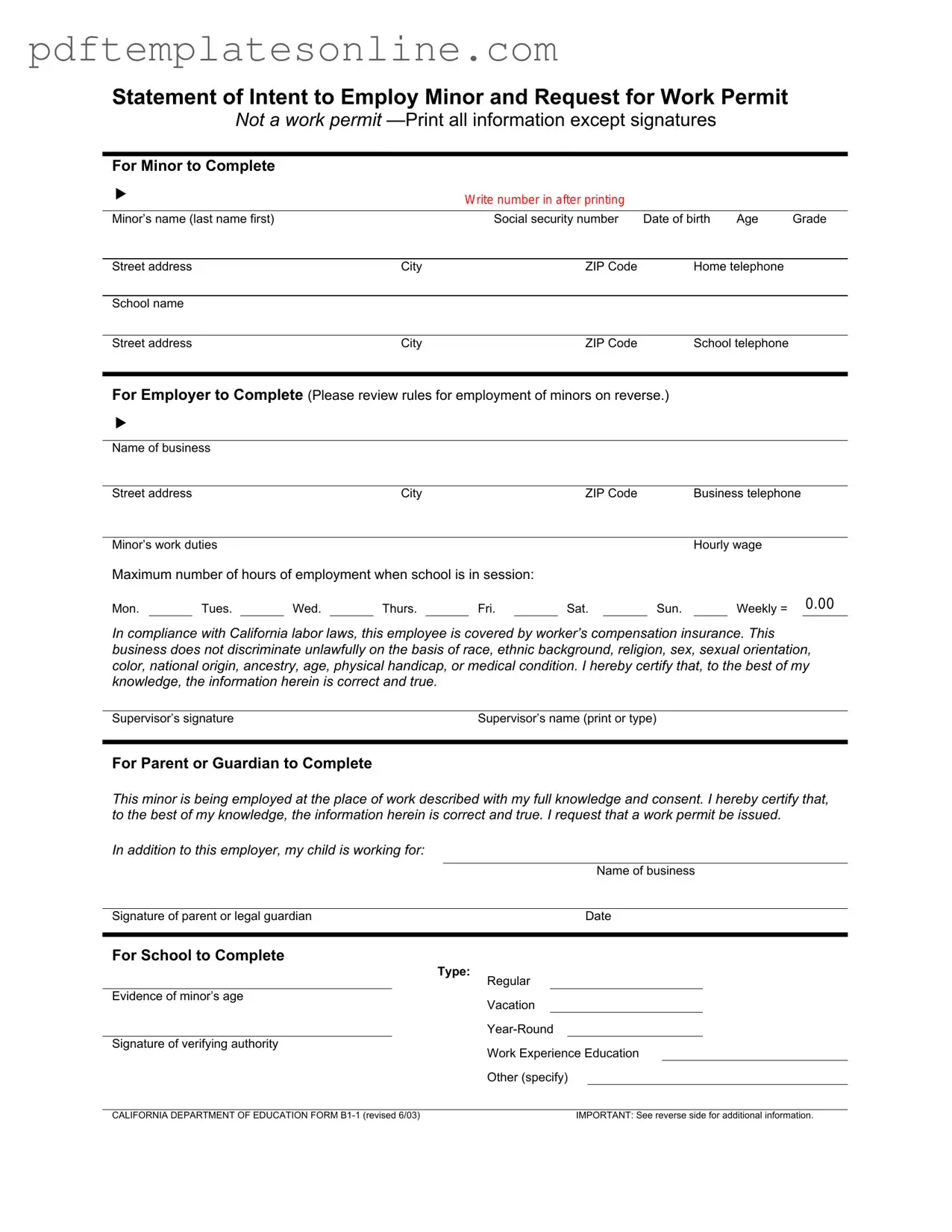Filling out the Statement of Intent to Employ Minor and Request for Work Permit form can be straightforward, but many people still make mistakes that can delay the process. One common error is failing to provide accurate personal information. It’s crucial to ensure that the minor’s name, address, and date of birth are correct. Any discrepancies can lead to complications or even rejections of the application.
Another frequent mistake is neglecting to obtain the necessary signatures. Both the employer and the parent or guardian must sign the form. If one signature is missing, the application will not be processed. Always double-check that all required signatures are present before submitting the form.
Many applicants also overlook the importance of including the correct job description. The form requires a detailed description of the work the minor will be doing. Vague or incomplete descriptions can raise red flags and may result in the application being sent back for clarification.
In addition, some people forget to check the age restrictions associated with the type of work being performed. Different jobs have different regulations regarding the age at which minors can work. It’s essential to ensure that the minor meets the age requirements for the specific job listed on the form.
Another common pitfall is not providing proof of the minor’s age. A birth certificate or another official document may be required to verify age. Failing to include this documentation can lead to delays or denials.
Applicants sometimes underestimate the importance of the work hours section. It’s vital to specify the hours the minor will work, including the days of the week. Inaccurate or incomplete information can result in the application being flagged for review.
Some individuals also mistakenly submit the form without reviewing the local labor laws. Each state has its own regulations regarding the employment of minors. Not being aware of these laws can lead to violations that may affect the employer and the minor.
People often forget to keep copies of the submitted form. Having a copy is helpful for reference in case any issues arise later. It’s always a good practice to maintain records of all submitted documents.
Additionally, failing to follow up on the application can be a costly mistake. After submission, it’s wise to check in with the appropriate authority to ensure that the application is being processed. This can help catch any issues early on.
Lastly, many applicants do not take the time to read the instructions carefully. Each form has specific requirements and instructions that must be followed. Skipping this step can lead to unnecessary errors and delays.
